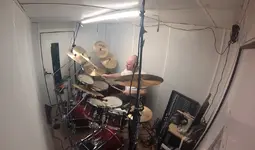E
Ekimtoor1
Member
For a very small studio, the only space I had to work with was a nook in my garage about 7x9 with an 8’ ceiling. In this space, I built a room, completely decoupled from the house, constructed of two layers of 5/8” drywall with green glue outside and inside, four layers all together, on 2x4 framing with rock wool. The door has similar construction and has a rather complicated seal that makes the room very tight. There are sound absorption panels on the inside walls.
I plan to record drums in this space. My question is, in this unusually small space, what mic pattern would work best?
Thanks!
Mike
I plan to record drums in this space. My question is, in this unusually small space, what mic pattern would work best?
Thanks!
Mike

